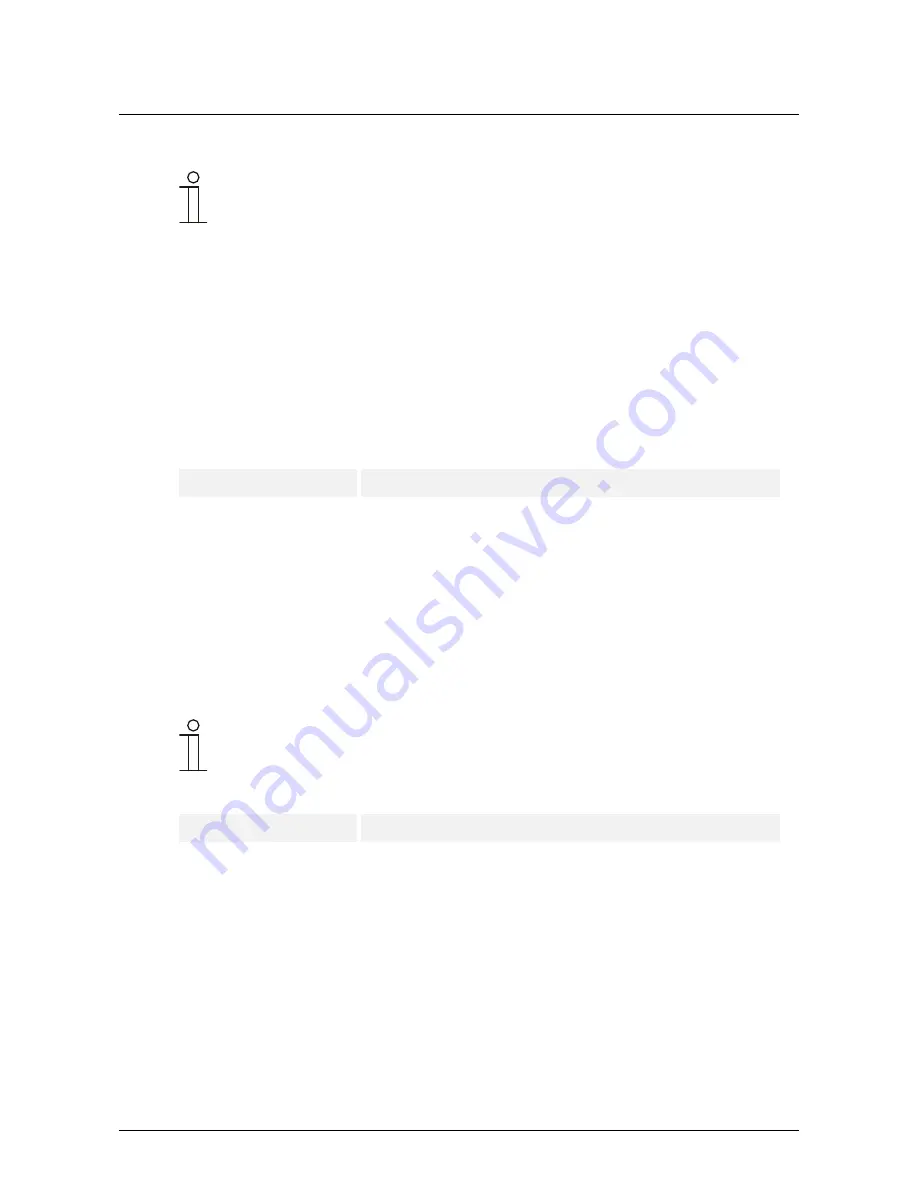
Description of application and parameters
Application "1-button blind"
KNX Technical Reference Manual 1473-1-8905 / 2CKA001473B8905
│29
10.5
Application "1-button blind"
NOTE
The application is valid for the following parts of the device:
■
Button 1 / rocker 1
■
Button 2
■
Button 3 / rocker 2
■
Button 4
Via the application "1-button blind", blind movement and/or slats adjustment commands can be
sent to connected blind actuators with a short or long actuation of the button. A short button
press always triggers a slats adjustment or stop command and a long button press always
triggers a travel command. The control always remembers the last action performed on the side
of the button that is assigned with the "1-button blind" application. For example: If a blind was
lowered and halted at half height via a short button contact, then a renewed long button contact
will raise the blind.
10.5.1 General parameters - Time for long operation
Options:
00.300 ... 03.000
A differentiation can be made between a short or long operation of the button. With a short
operation of the button, the next level forward is switched to in each case. With a long
operation, the first level is activated. Thus with a long button press a jump back from every
position to the first level is possible, without having to run through the remaining levels.
Via the "Duration of long operation", the time is specified from which a long button press is
recognised and the object values are reset. The first level must be set again with a press of the
button. Any time from 0.3 to 3 seconds can be set. A typical value after which a jump-back to
level 1 is made is 0.4 s.
10.5.2 General parameters - Cycle time of the telegram repetition
NOTE
This parameter is only visible if the "Object type" parameter is set to 1 bit.
Options:
00.100 ... 05.000
Telegrams are sent out on the "Adjust" object cyclically as long as the button is operated. The
intervals can be freely set from 0.1 s to 5.0 s. As standard, the telegrams are sent out cyclic at
an interval of 1 second.
Via this function, it is possible to more accurately position larger slats that require a longer time
for a complete slat rotation. This means that the user holds the button pressed until the slats are
set to the desired position and then releases the button.
















































